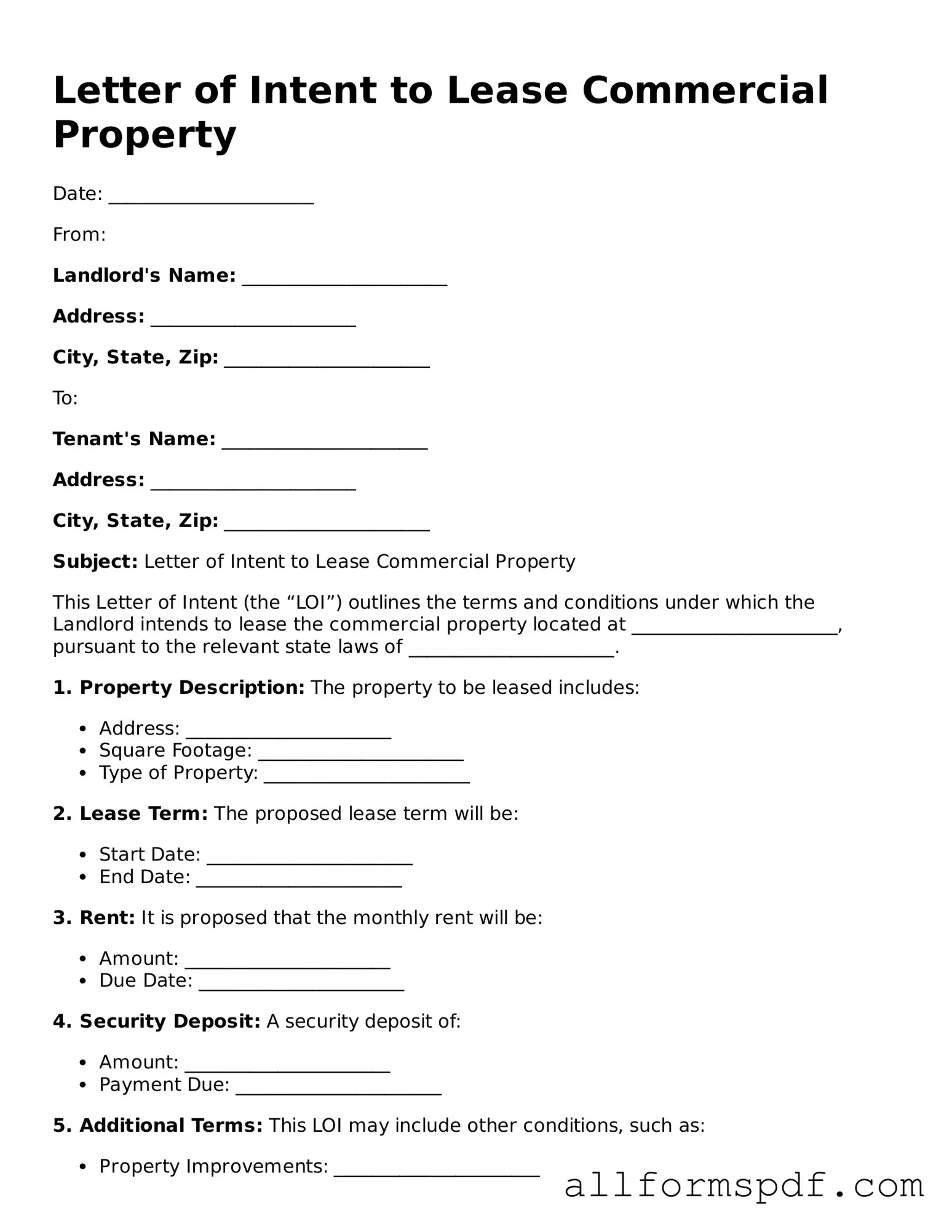When individuals complete the Letter of Intent to Lease Commercial Property form, several common mistakes can occur. One significant error is failing to provide accurate contact information. This includes not only the name and address of the prospective tenant but also the correct phone number and email address. Without this information, communication between the parties may become challenging, leading to misunderstandings or missed opportunities.
Another frequent mistake involves neglecting to specify the intended use of the commercial space. Clearly stating how the property will be used is crucial. It helps the landlord understand the tenant's needs and ensures that the space is suitable for those purposes. If this detail is omitted, it could result in complications down the line, especially if the property is not zoned for the intended use.
People often overlook the importance of detailing the lease term. The length of the lease should be clearly defined, whether it is for a short-term or long-term arrangement. Ambiguity in this area can lead to disputes later on, as both parties may have different expectations regarding the duration of the lease.
Additionally, prospective tenants sometimes fail to include important financial details. This includes the proposed rent amount and any additional costs, such as maintenance fees or utilities. By not providing a clear picture of the financial obligations, the landlord may hesitate to proceed, thinking that the tenant is not serious about the lease.
Lastly, individuals may not take the time to review the form for completeness and accuracy before submission. Missing signatures or incomplete sections can delay the leasing process. Ensuring that every part of the form is filled out correctly helps facilitate a smoother transaction and demonstrates professionalism.
